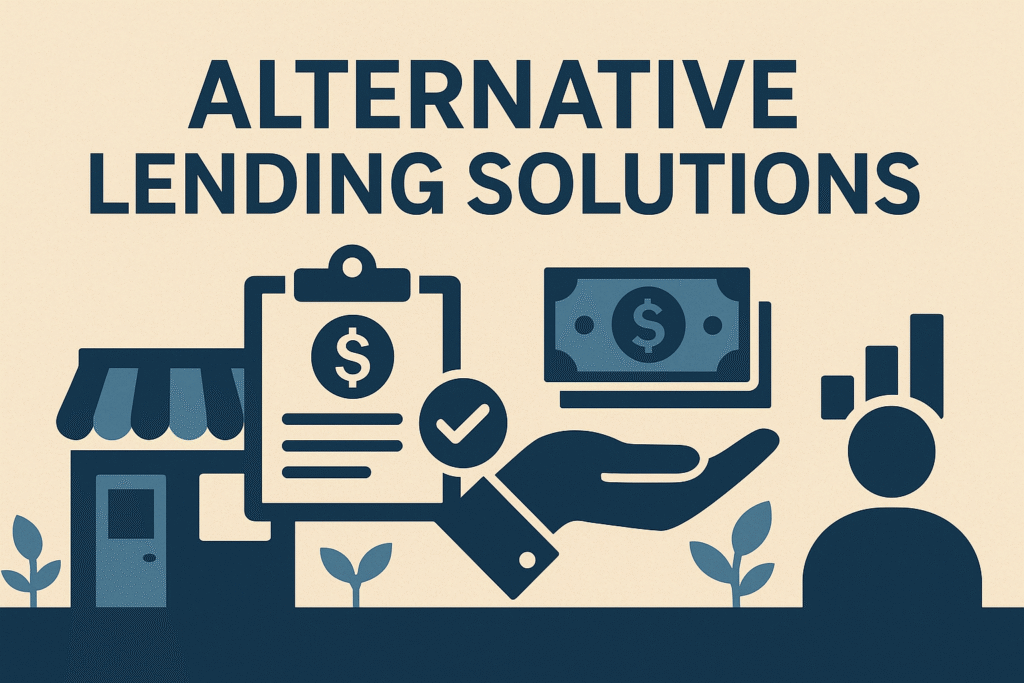Alternative lending solutions have transformed the financing landscape, offering flexible, personalized borrowing options. These services provide easier qualification, rapid funding, and innovative technology, supporting small business owners and entrepreneurs. They often use online platforms to bypass traditional banks’ lengthy procedures, focusing on speed and accessibility for diverse borrowers. Understanding these opportunities is crucial for securing capital today. Expert guidance helps navigate risks, align solutions with goals, and make informed decisions.
Easier Qualification and Faster Funding
One of the most compelling reasons for the rapid growth of alternative lending is the ease of qualification. Unlike conventional banks, which rely heavily on established credit history and collateral, many alternative lenders consider a broader range of data points to assess risk and approve applications. Startups, entrepreneurs, and small businesses with limited track records can often secure funding much faster—sometimes within 24 to 48 hours—opening the door to opportunities that would otherwise be missed due to the slow traditional funding process. This speed and accessibility have been game changers for businesses needing immediate capital for operational needs or growth projects. To ensure these quick funding opportunities align with long-term stability, consulting a fiduciary financial advisor can help borrowers make choices that balance short-term needs with future financial health.
Tailored Financing Options
Alternative lending is not a one-size-fits-all solution. Lenders in this space prioritize flexibility, often offering variable repayment schedules, customizable loan sizes, and products tailored to meet the unique needs of individual business models or specific industries. For instance, businesses with seasonal cash flow can negotiate payment timelines that better reflect their revenue cycles. This customization helps limit financial strain, ensuring that companies don’t outpace their capacity to pay back their loans while accommodating ever-changing operational requirements. This trend accommodates the diverse financial realities faced by today’s business owners, further setting alternative lending apart from traditional options.
Technological Advancements in Lending
At the heart of alternative lending’s effectiveness is its embrace of innovation and technology. Online lenders, fintech companies, and peer-to-peer platforms have digitized the entire borrowing experience, from application and approval to disbursement and repayment tracking. Artificial intelligence and machine learning help streamline underwriting and make risk assessments more accurate, leading to faster and fairer decisions. These advancements are beneficial for borrowers in underserved communities, where traditional banking relationships may be limited or non-existent. As businesses and consumers become increasingly comfortable with digital solutions, the fintech sector is positioned for continued growth and influence in the broader lending landscape.
Preventing Share Dilution
Protecting business ownership is a top priority for many entrepreneurs, particularly those in the early stages of growth. Alternative lending, primarily through debt-based products, enables companies to raise the necessary capital without relinquishing equity. This not only protects the founding team’s stake but also preserves future valuation and control over the company’s direction. For fast-growing startups sensitive to ownership dilution, non-equity financing solutions provide a critical lever for scaling on their own terms.

Supporting Business Growth
Many alternative lenders explicitly target small- and medium-sized businesses—segments often overlooked by banks. By offering financing that bridges the gap between ambition and available resources, these lenders enable more businesses to hire, expand into new markets, and invest in innovation. Accessible capital is one of the primary factors driving small business resilience and job creation. The evolution of the alternative lending industry has directly contributed to local economic development and entrepreneurial success across diverse sectors.
Potential Limitations of Alternative Financing
Despite its advantages, borrowers should consider the limitations of alternative financing. Interest rates and associated fees are often higher than those offered by traditional banks, reflecting the increased risk that lenders take on. Additionally, the regulatory landscape for alternative lenders remains less rigid, sometimes exposing borrowers to predatory or unregulated players. Prospective borrowers are encouraged to conduct due diligence, compare terms, and seek knowledgeable advice—partnering with a financial professional can help mitigate risk and optimize outcomes.
Conclusion
Alternative lending solutions have gained a reputation for delivering fast, flexible, and accessible funding—crucial advantages for today’s business owners and individuals navigating a rapidly changing financial landscape. By harnessing technology, tailoring financial products, and providing crucial protections for entrepreneurs, this sector is transforming the way capital is accessed and allocated. Understanding the benefits, limitations, and evolving opportunities within alternative lending enables borrowers to take full advantage of these solutions—maximizing growth potential while safeguarding their interests.

